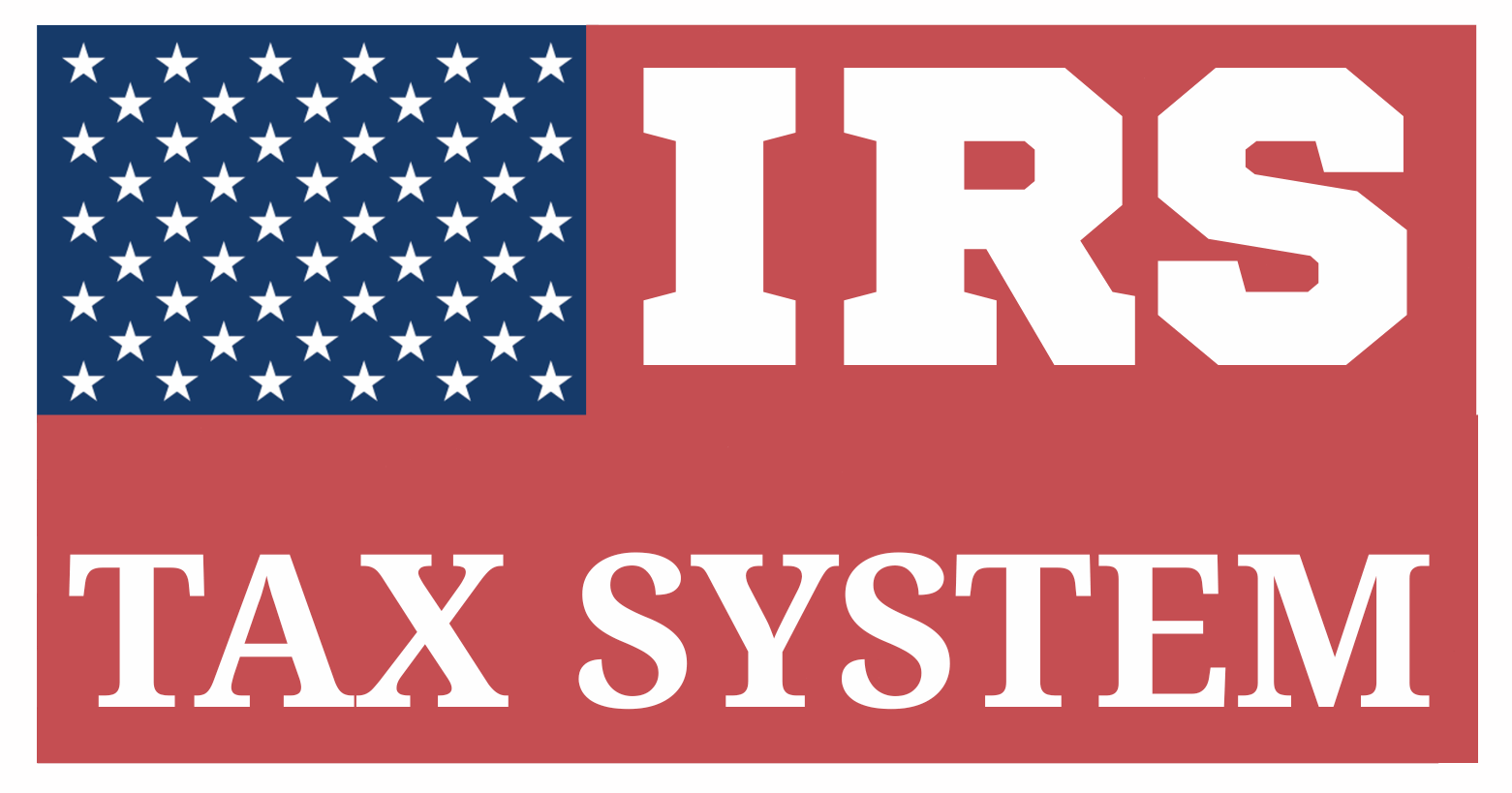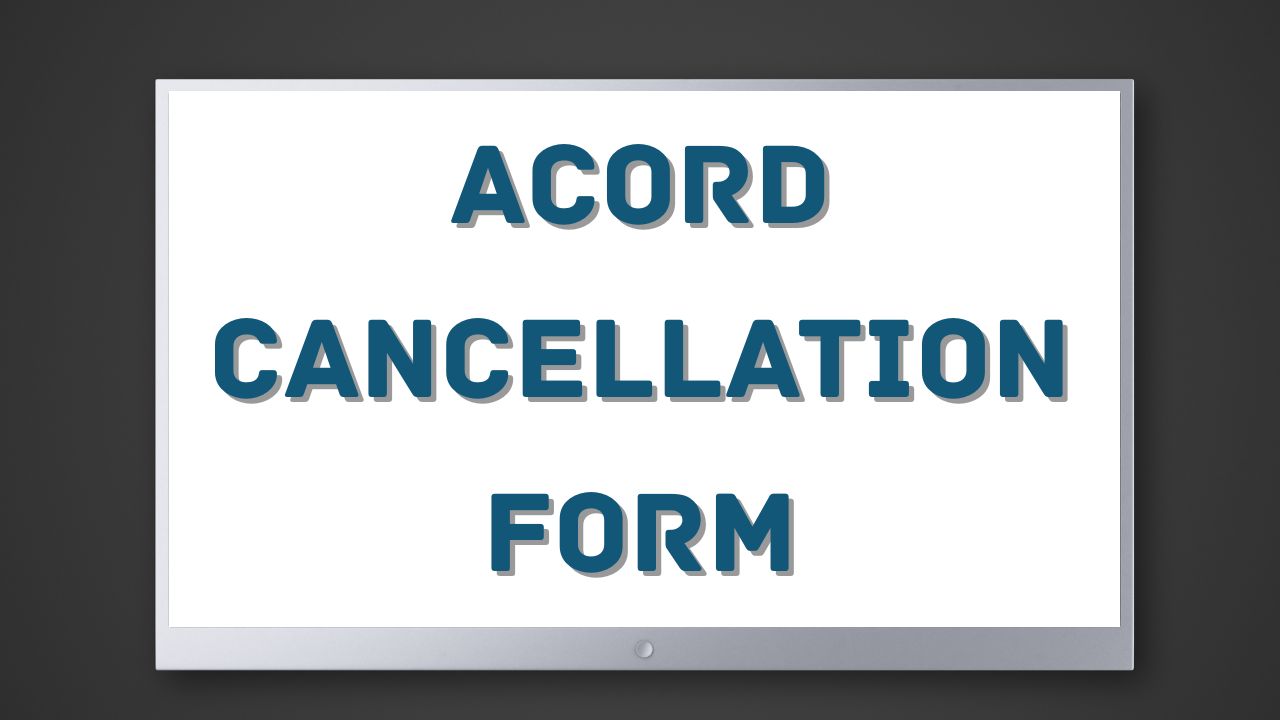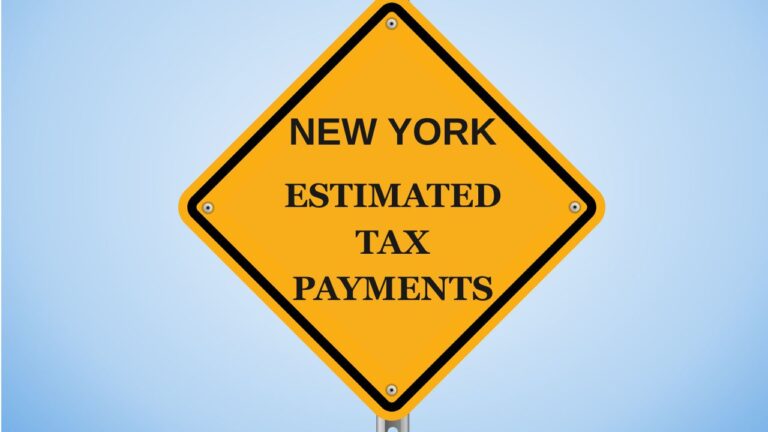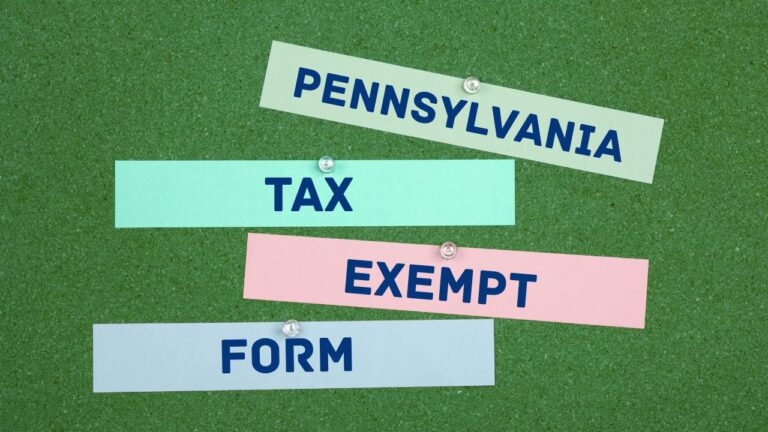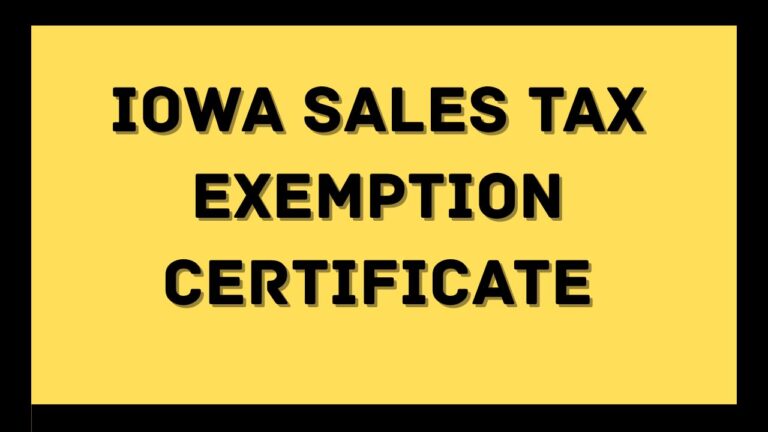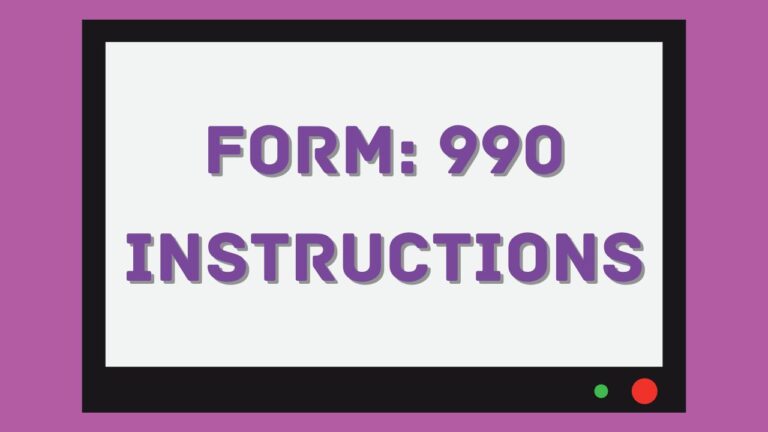ACORD Cancellation Form: Perfect Review In 2025
Table of Contents
Everything You Need To Know About ACORD Cancellation Form?
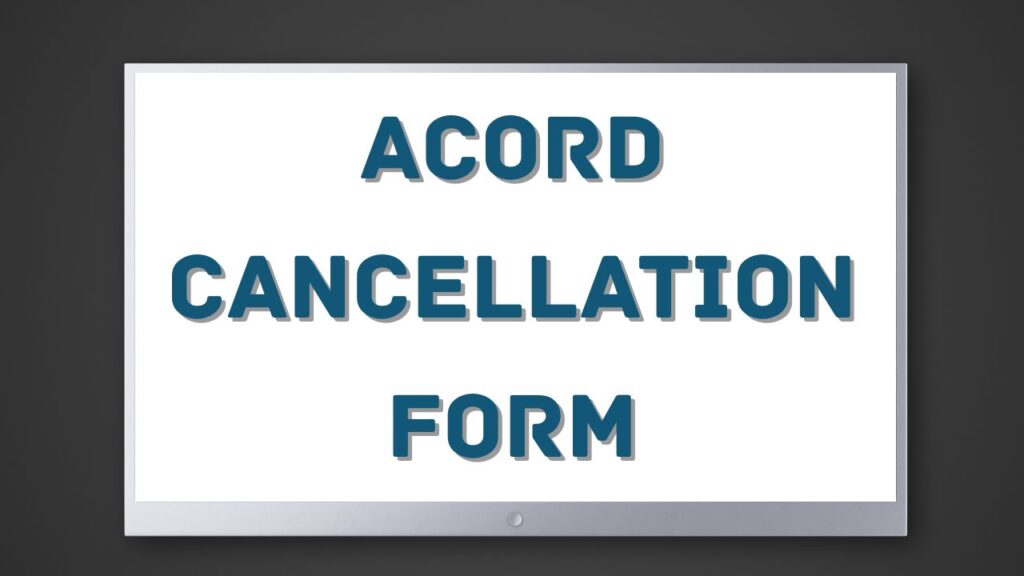
The ACORD Cancellation Form is a standardized insurance document developed by ACORD, a nonprofit organization that creates industry-wide forms to ensure consistency and efficiency in insurance communications. This form provides a formal, traceable way to cancel an insurance policy, ensuring that all parties—the insurer, policyholder, and broker or agent—are aware of the termination and its effective date.
It’s widely accepted across the property and casualty (P&C) insurance industry in the United States and Canada and is considered the industry standard for communicating policy cancellations.
Primary Purpose of the ACORD Cancellation Form
The primary purpose of the ACORD Cancellation Form is to provide a standardized and formalized method for terminating an insurance policy before its scheduled expiration date. It serves as an official notification from the insured or the insurer that coverage should end on a specific date and time, ensuring legal clarity and mutual understanding.
This form:
- Communicates policy cancellation clearly to all stakeholders, including the insurance carrier, agent/broker, and any third parties such as lenders or certificate holders.
- Documents the reason for cancellation (e.g., nonpayment, policy replaced, no longer needed), which is often required for regulatory, underwriting, and internal tracking purposes.
- Initiates the calculation and refund of any unused premium, depending on whether the policy is cancelled on a pro-rata or short-rate basis.
- Protects all parties from liability, as it provides a written, time-stamped record of the intent to cancel coverage.
In essence, the ACORD Cancellation Form ensures that policy termination is legally valid, traceable, and compliant with industry standards, minimizing disputes and administrative confusion.
When Is the ACORD Cancellation Form Used?
It acts as a compliance-oriented notice of cancellation, helping both insurers and insureds align on the effective end date of coverage.
Common use cases include:
1. Policyholder-Initiated Cancellation
- The insured voluntarily cancels the policy because:
- The insured property has been sold or transferred.
- They are switching to another insurance carrier for better coverage or pricing.
- The business is shutting down or no longer requires specific coverage (e.g., commercial auto, general liability).
- The policy was bound by mistake or duplicate coverage was issued.
2. Insurer-Initiated Cancellation
- The insurance company cancels the policy due to:
- Nonpayment of premium after required notices.
- Material misrepresentation or fraud in the application or claim process.
- Substantial increase in risk (e.g., unreported changes to property or operations).
- Failure to comply with underwriting guidelines or contractual obligations.
3. Policy Rewrite or Replacement
- The insured is issued a new policy, possibly with a different carrier or under a revised risk structure, requiring the original policy to be terminated (such as replacing a personal auto policy with a commercial one).
4. Change in Ownership or Business Structure
- A policy may be canceled if:
- A business is sold, merged, or dissolved.
- A change in the name, legal structure, or tax ID necessitates a new policy.
5. Property No Longer Exists or Is Ineligible
- The covered asset (home, vehicle, building) has been:
- Destroyed, sold, or relocated.
- No longer qualifies for the coverage due to a change in use or location.
6. Coverage Type Is No Longer Needed
- For example:
- A seasonal business closes and no longer needs workers’ compensation or liability coverage.
- An individual sells their only car and cancels auto insurance.
7. Administrative or Policy Corrections
- If a policy was issued in error (e.g., duplicated or bound incorrectly), the form is used to issue a flat cancellation (as though the policy never existed).
In all of these cases, the ACORD Cancellation Form provides a clear and standardized process to terminate coverage, document the cancellation type (pro-rata, short-rate, flat), and help insurers adjust premiums and manage compliance responsibilities.
ACORD Cancellation Form Instructions
Each section serves a critical role in identifying the policy, explaining the cancellation, and ensuring proper documentation.
1. Policyholder Information
- Name and Address of the insured (individual or business entity).
- This identifies the party requesting or affected by the cancellation.
2. Insurance Company Information
- Full name of the insurance carrier issuing the policy.
- Ensures clarity on which insurer is responsible for processing the cancellation.
3. Policy Number
- The unique identification number of the insurance policy being cancelled.
- Prevents confusion when the insured has multiple active policies.
4. Type of Insurance
- Specifies the category of coverage (e.g., commercial general liability, property, auto, workers’ compensation).
- Helps route the request correctly and apply the right cancellation rules.
5. Effective Date of Cancellation
- The exact date (and sometimes time) when the coverage should end.
- Important for calculating return premiums and ensuring uninterrupted coverage if switching providers.
6. Reason for Cancellation
- A brief explanation is required (e.g., sold vehicle, non-payment, rewritten, business closed).
- Some states or insurance regulators may require specific reason codes for audit and compliance.
7. Cancellation Method
- Pro-Rata: The insured gets a full refund for the unused premium.
- Short-Rate: A penalty applies; refund is reduced.
- Flat: Cancellation is treated as if the policy never took effect (typically only allowed under specific circumstances, like a duplicate policy).
8. Authorized Signature
- Signature of the insured, agent/broker, or authorized company representative.
- Confirms intent and authorizes the action.
9. Agency or Producer Details
- Includes name, license number, and contact information of the agent or broker managing the policy.
- Establishes clear responsibility and designates a contact person for any follow-up inquiries or clarifications.
10. Remarks Section
- A free-form space for additional notes or clarifications, such as mailing instructions for return premium checks, or details on a policy rewrite.
Optional but Common Additions:
- Date of Notice: When the form was filled or submitted.
- Certificate Holder or Additional Insured Notice: If third parties need to be informed of the cancellation.
- Mailing Instructions: For the cancellation notice or premium refund check.
Each component plays a critical role in maintaining a clear paper trail, ensuring regulatory compliance, and avoiding coverage disputes or billing errors.
How to Calculate & File the ACORD Cancellation Form
While the ACORD Cancellation Form itself doesn’t require complex tax or premium calculations within the form, it is closely tied to determining the correct return premium amount and selecting the appropriate cancellation method. Here’s a breakdown of how to manage both the calculation and filing process:
Step 1: Identify the Cancellation Method
There are three main methods, and each determines the refund amount differently:
| Cancellation Type | Description | Refund Impact |
| Pro Rata | Full refund of unused premium | 100% of unused days |
| Short Rate | Refund with an early cancellation penalty | 90–95% of unused days |
| Flat Cancellation | No coverage ever in force (e.g., duplicate policy) | Full refund (as if never issued) |
The method is typically dictated by the insurer or by reason for cancellation. Policy documents outline whether short-rate or pro-rata applies.
Step 2: Calculate Return Premium (if applicable)
If you’re eligible for a return premium, use this formula:
Return Premium Formula (Pro Rata):
ReturnPremium=(Annual Premium ÷365) × Unused Days
Return Premium Formula (Short Rate):
ReturnPremium=[(Annual Premium ÷365) × Unused Days] – Penalty
Example (Pro Rata):
- Annual premium: $1,200
- Cancellation date: Day 200 of the year
- Unused days: 165
- Return premium = ($1,200 ÷ 365) × 165 = $542.47
Step 3: Complete the ACORD Cancellation Form
Fill out the form with the following key sections:
- Insured’s name & address
- Policy number & insurance company
- Type of insurance (e.g., General Liability, Auto, Property)
- Cancellation effective date
- Reason for cancellation (e.g., sold asset, changed insurer)
- Cancellation type (Pro Rata, Short Rate, Flat)
- Signature of the insured or authorized representative
- Agent/producer information (including contact details)
- Optional remarks – Include refund instructions or mailing preferences
Step 4: Submit the Form
Depending on who initiates cancellation, the form is submitted to:
- Insurance carrier (if policyholder initiates cancellation)
- Broker or agency (to process cancellation through the carrier)
- Policyholder/client (if insurer initiates the cancellation for compliance)
Submission may be done via email, fax, or secure agency portal. Many insurers now accept e-signatures and scanned PDF submissions.
Step 5: Retain a Copy
Always retain a copy for at least 5–7 years, especially for:
- Audits
- Proof of coverage termination
- Refund disputes
- Lender or certificate holder communications
Optional: Notify Third Parties
If a lender, leasing company, or certificate holder was listed on the policy, you may be required to send a copy of the cancellation notice or provide written proof of termination.
Precise ACORD Cancellation Form Example
Insured’s Details
- Name: XYZ Electrical Solutions LLC
- Address: 456 Market Street, Philadelphia, PA 19103
Policy Information
- Insurance Carrier: Liberty Business Insurance
- Policy Number: BOP-789456
- Type of Policy: Business Owner’s Policy (Property + Liability)
- Total Annual Premium Paid: $4,380
- Policy Period: January 1, 2025 – December 31, 2025 (365 days)
Requested Cancellation
- Effective Date of Cancellation: May 15, 2025
- Days Covered: Jan 1 to May 15 = 135 days
- Unused Days: 365 – 135 = 230 days
- Reason for Cancellation: Merged with another business
- Cancellation Type: Pro Rata
Pro Rata Refund Calculation
| Component | Value |
| Daily Premium Rate | $4,380 ÷ 365 = $12.00 |
| Unused Days Remaining | 230 days |
| Refund Due to Insured | 230 × $12.00 = $2,760 |
Refund Expected: $2,760 via check within 2–3 weeks.
Signature & Filing
- Authorized Signer: John A. Reynolds, Owner
- Signature Date: May 10, 2025
- Broker/Agency: Keystone Risk Advisors LLC
- Method of Submission: Secure email with scanned form
- Attachments Included:
- Proof of business merger
- Copy of original policy declaration page
Legal & Compliance Implications of the ACORD Cancellation Form
The ACORD Cancellation Form serves as an official legal instrument for ending an insurance policy prior to its scheduled expiration. Though straightforward in appearance, it carries important legal and regulatory implications for both the insured and the insurance provider.
1. Binding Nature of the Cancellation Request
Once signed and submitted, the ACORD Cancellation Form becomes a legally enforceable record of the insured’s intent to cancel coverage. The insurer is obligated to process the cancellation per the stated effective date, provided it complies with state regulations and contractual terms.
2. Regulatory Compliance
Insurance cancellations must comply with state insurance laws, which may include:
- Minimum notice periods (e.g., 10–30 days in advance)
- Required justification for certain types of policies (e.g., workers’ compensation)
- Notification to additional insureds or certificate holders (such as landlords or lenders)
Failure to adhere to these may result in regulatory penalties or policy reinstatement requirements.
3. Proof of Termination
The completed ACORD form serves as legal proof of cancellation in case of:
- Future disputes over coverage dates
- Claims filed after the cancellation effective date
- Audits conducted by regulatory bodies
4. Impact on Premium Refunds
The method of cancellation—whether pro rata or short rate—has a direct impact on the amount of premium refunded to the policyholder. If improperly filled or disputed, the insurer may withhold a portion of the premium or deny the refund. Disputes may escalate to regulatory review or litigation.
5. Third-Party Notification Obligations
If third parties (e.g., banks, leasing companies, municipalities) are listed as certificate holders, failure to notify them of the cancellation can lead to contractual breaches, legal claims, or financial exposure.
6. Carrier-Specific Requirements
Some insurers may require:
- Additional internal cancellation forms
- Written confirmation from both the insured and agent
- Valid supporting documentation (e.g., sale of asset, business closure)
Non-compliance may delay processing and invalidate the request.
7. E&O Exposure for Insurance Agents
Insurance agents and brokers must ensure:
- The form is properly executed
- The effective date complies with policy language
- All stakeholders are notified
Failing to do so can expose the agent to errors and omissions (E&O) liability.
Penalty & Deadline Considerations for ACORD Cancellation Form
Deadline for Submitting the Form
There is no fixed IRS or federal deadline for submitting the ACORD Cancellation Form, but timeliness is critical because:
- Most insurance companies require at least 10 to 30 days’ notice prior to the requested cancellation date.
- The effective date of cancellation cannot be backdated without insurer approval and may affect refund eligibility.
- Delays in submission may extend the coverage period unintentionally, leading to unwanted charges or denied refund requests.
Potential Penalties and Financial Implications
Although the ACORD form itself doesn’t carry IRS-style penalties, the consequences of late or improper cancellation can be financially significant:
1. Short-Rate Penalty
- If you cancel midterm without cause acceptable under your policy, the insurer may apply a short-rate cancellation penalty, typically around 10% of the unearned premium.
- For example, if you’re due a $1,000 refund on a pro rata basis, a short-rate penalty could reduce that refund to $900 or less.
2. Loss of Refund Eligibility
- If cancellation is requested after the policy has renewed or after a claims-triggering event, you may forfeit any unearned premium.
- Refunds are often denied when forms are incomplete, unsigned, or submitted after cancellation deadlines.
3. Exposure to Liability
- If coverage lapses due to late cancellation processing (e.g., third-party certificate holders not informed), you could be held liable for damages during the unintended coverage gap.
- Businesses that operate in regulated industries may face state-level penalties or violations for operating uninsured.
4. Contractual Penalties
- Active insurance coverage is often a mandatory condition in commercial leases, financing agreements, and contractual obligations.
- Cancelling coverage without notifying required parties (like landlords or banks) could trigger contractual default clauses.
Conclusion
The ACORD Cancellation Form is an essential document used to officially and lawfully terminate an insurance policy agreement. Whether you’re a business terminating commercial coverage or an individual cancelling a personal policy, proper use of this form ensures compliance, avoids coverage disputes, and supports timely premium refunds. To avoid penalties or contractual issues, it’s essential to submit the form accurately, notify all relevant parties, and adhere to insurer-specific guidelines and deadlines.
By understanding the form’s structure, legal implications, and refund calculations, policyholders can confidently navigate the cancellation process while minimizing risk and ensuring smooth transitions in coverage
Frequently Asked Questions (FAQs)
How is the ACORD Cancellation Form used in terminating insurance coverage?
The ACORD Cancellation Form is used to officially request the termination of an existing insurance policy. It notifies the insurer that the policyholder wants to cancel coverage as of a specific date.
Is the ACORD Cancellation Form mandatory for all insurance cancellations?
No, but many insurance companies require it for documentation purposes. Even when not mandatory, using it helps avoid disputes over cancellation dates and refund eligibility.
Can I cancel my policy at any time using the ACORD form?
Yes, most policies allow cancellation at any time. However, depending on the timing, you may be subject to a short-rate penalty and might not receive a full refund of unearned premiums.
Is there a deadline for submitting the ACORD Cancellation Form?
While there’s no federal deadline, most insurers require at least 10–30 days’ notice. Submitting late may delay cancellation or result in extra premium charges.
Will I get a refund if I cancel my policy early?
Usually, yes. If you cancel before the policy end date, you may receive a refund for the unused portion of your premium. The refund amount depends on whether the cancellation is pro rata or short-rate.
What’s the difference between pro rata and short-rate cancellation?
–Pro rata refunds return the full unused premium.
–Short-rate refunds deduct a cancellation penalty, typically 10% of the unearned amount.
Who signs the ACORD Cancellation Form?
The form is generally signed by the named insured or an authorized representative, though in some cases, the insurance agent may also need to complete and file it on the policyholder’s behalf.
Can a cancellation be backdated?
Generally, no. Most insurers do not allow backdated cancellations unless there’s a valid reason and supporting documentation. Backdating may also violate contract terms.
What happens if I don’t notify a third party listed on my insurance policy?
Failing to inform certificate holders (like lenders or landlords) of cancellation could breach your contract and leave you liable for damages or violations.
Do I file the ACORD form with the IRS or any government agency?
No. The ACORD Cancellation Form is not filed with any government agency. It is submitted directly to the insurance carrier and retained for audit or legal purposes.
